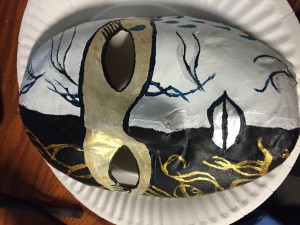I love puppies. Anyone who knows me knows I love my dog pretty much more than anything else on this planet. Dogs are amazing animals and it really makes me sad how so many people think they are just that – just animals. We treat my dog like another person in my house. When you pay attention, you notice just how expressive dogs are. They get happy, sad, frustrated and tired. They miss their humans when they’re gone but they also need their own alone time. They can communicate very effectively if you know how to listen, and they can tell you things beyond just “I need to go out” or “I’m hungry”. And every dog is different – snuggly dogs will tell you that they love you by plopping in your lap. My dog, who is a German Shepherd, doesn’t like to snuggle, but she tackles me every time I come home and follows me around the house and sits at my feet when I watch tv or eat dinner.
Guiding Eyes is a nonprofit organization which breeds all their own dogs and trains them to be seeing eye dogs. They work with labs and shepherds, and the process is very extensive and is as much about the dogs as it is about the people. People get matched to dogs and the people actually have to go through training as well to learn about the particular aspects about the dog and how to handle them. The dogs also have some sort of say – if they really don’t seem to enjoy the work or if there is a reason they cannot work, they are given to loving homes as pets. Guiding eyes recognizes the amazing abilities of dogs and their intelligence, and I really appreciated hearing about the organization (and playing with the puppies!)


